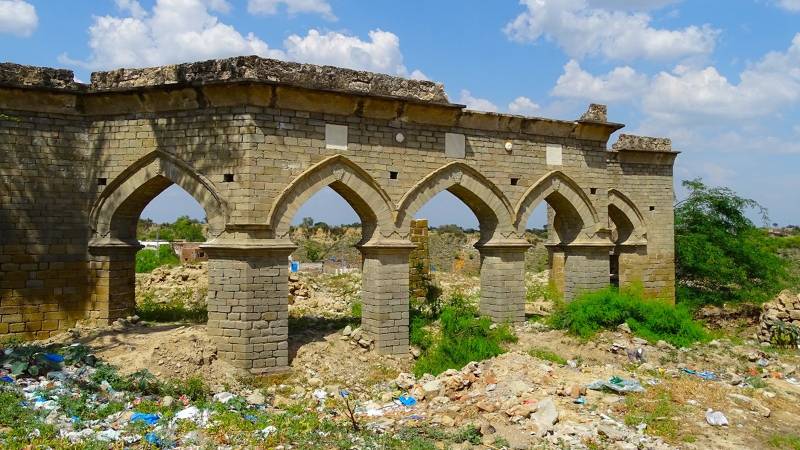
Padhri is a historical village in the Jhelum district. It is located about 45 km from Sohawa town in the Jhelum district. I visited this village with Mirza Safdar Baig, an oral historian of Jhelum City, who knows about the district's oral history and cultural heritage. He is known for his work on the Sikh heritage of Punjab. He has visited every known Sikh structure in Punjab and brought it to the international limelight, getting the attention of scholars to collaborate with him on the Sikh heritage of Punjab. He was very generous in accompanying me to Domeli and Padhri in 2019.
We first visited the havelis, Samadhis, baolis and temples of Domeli, and later, we visited the monuments of Padhri village. We met with a few oral historians and village intellectuals who knew the history of the village; prominent among them were Raja Haji Azad Gakhar and Raja Qamar Zaman Gakhar. Raja Haji Azad was from the family of Raj Wali Khan, who used to resolve village problems at his building in the village, which now lies in ruins. Raja Haji Azad, a Gakhar noble and village intellectual, died last year; he was the most knowledgeable person in the village.
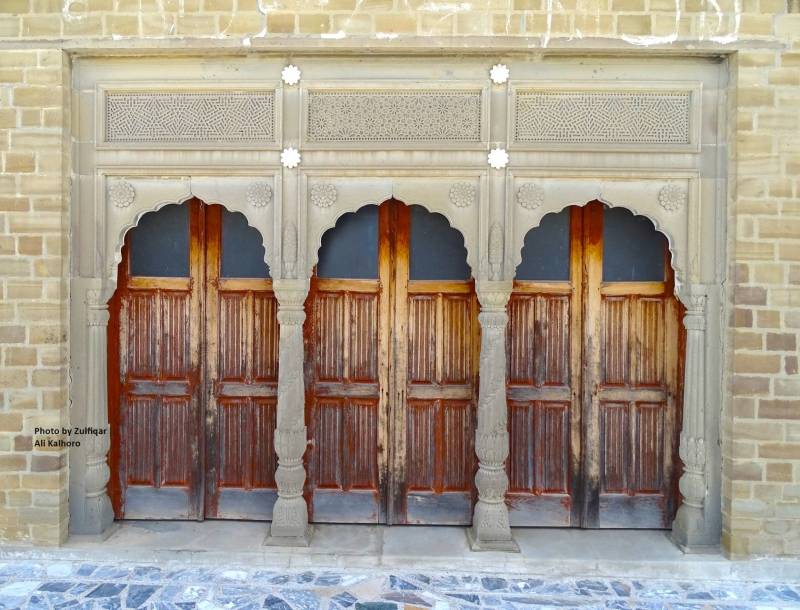
Padhri, once a vibrant settlement, was home to Muslims and Hindus. After partition, the Hindu community migrated to India, leaving behind their mansions. Gakhars and Muslim Rajputs were and still are the most influential people in the village.
Many of the structures left behind by Hindus have been either renovated or demolished, with only a few surviving, albeit losing their original beauty and lustre. The choubaras of Hindus were particularly noted for their intricate stone and woodwork, a testament to the village's rich cultural heritage.
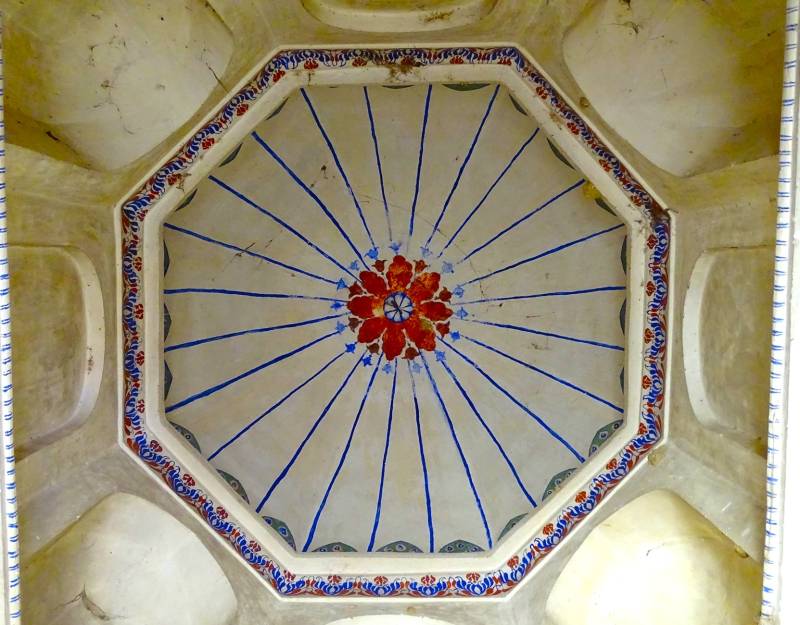
Stone and wood were profusely used in all havelis of the village. The stone was brought from nearby streams and dressed by the Mistris (masons) of the village. One of the mansions of Ladha Sonara, which was located in Mohalla Mistrian, was noted for stonework. Only a few walls of the Choubara exist now. The entrance doors always received additional attention from the owners. While passing through the village’s narrow streets, one first glimpses the ornately wooden carved doors and stone masonry, which reflect the identity of the owners of the havelis. Some porticoes of choubaras in Padhri village are noted for their simple ornamentation, which has been modified but still retains its grace, showing the aesthetics and affluence of the merchants and aristocrats of the village. These porticoes were always flanked by sitting platforms, where the older family members once sat and observed the social and economic activities in the street; they also received special treatment from the builders of the Choubaras in Padhri village. There was also a bazaar in the village.
Apart from the Choubaras of Hindus in the village, another noteworthy structure was the temple, which now lies in a poor state of preservation. The surviving temple in Padhri village reflects the identity of the Hindu community that left the village after the 1947 partition.
The temple is also made of dressed stones. Once, it was surrounded by stone walls. Now, the walls have collapsed, and those that have survived are also crumbling. The surviving walls have arched niches that were seemingly used to keep oil lamps. There were also rooms adjacent to the temple where the pilgrims used to stay during their visit.
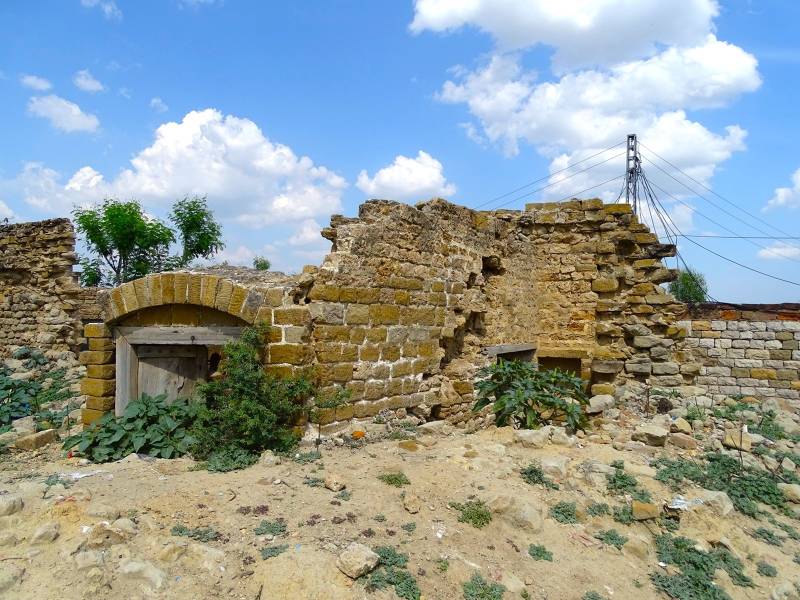
The affluent community of Padhri employed the local Mistris, who constructed the temple and worked on it with dexterity. The temple is square in plan, surmounted by a square shikhara (superstructure). It also has a square garbhagriha (inner sanctum) for placing the image of the deity. Generally, one sees temples with octagonal shikhars in Jhelum and other districts in Pothohar.
One of the distinctive features of Padhri temple is the painting work that decorates its interior. The temple's garbhagriha has also been painted, but most of the paintings are in poor condition. Floral and geometric designs decorate the garbhagriha, and the domed ceiling of the temple is also painted. The choubara of Nanak Chand, a merchant in pre-partition Padhri, is within walking distance from the temple.
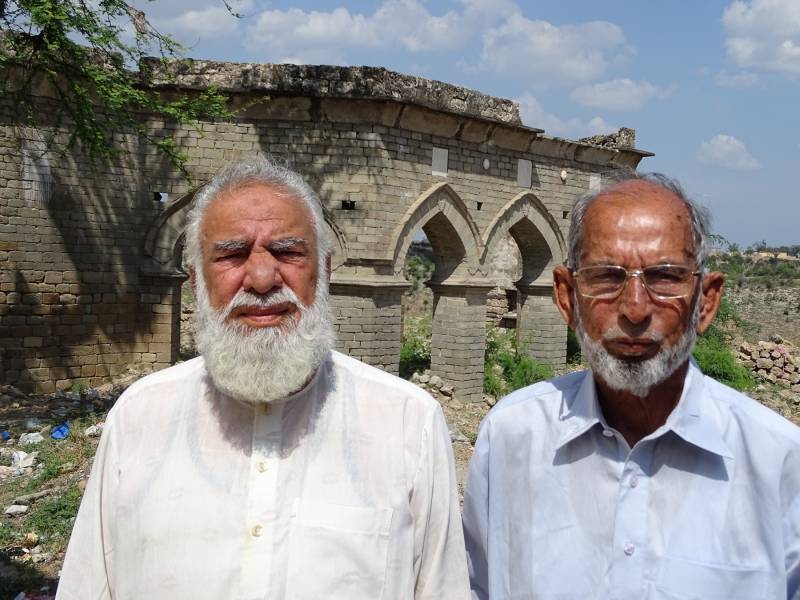
Apart from the temple, two other notable monuments in Padhri village include a stone-built mosque and the remains of a bungalow of Gakhar nobles. The mosque is located in the Mohalla Mistrian of the village and is noted for its beautiful stone carvings. It is a small mosque with three arched entrances to the main prayer hall. The triple-arched way was the popular prototype for stone-built mosques in Pothohar in the nineteenth and twentieth centuries.
This mosque is rectangular in plan, with two corner pillars rising from the thickness of the wall. Dressed stone slabs of various sizes were used to build the mosque. The façade of the mosque shows decorative slabs representing geometric designs. The decorative columns of the mosque are also attractive, and they appear to have been bought either from the Tarraki area or Domeli, which were then famous for stone masonry in the Jhelum region. I have seen such decorative pillars in many mosques in the Jhelum district, and I believe that the masons did not carve these on the sites but brought them from the market and used them in the mosques and other buildings in various villages and towns in the Jhelum district.
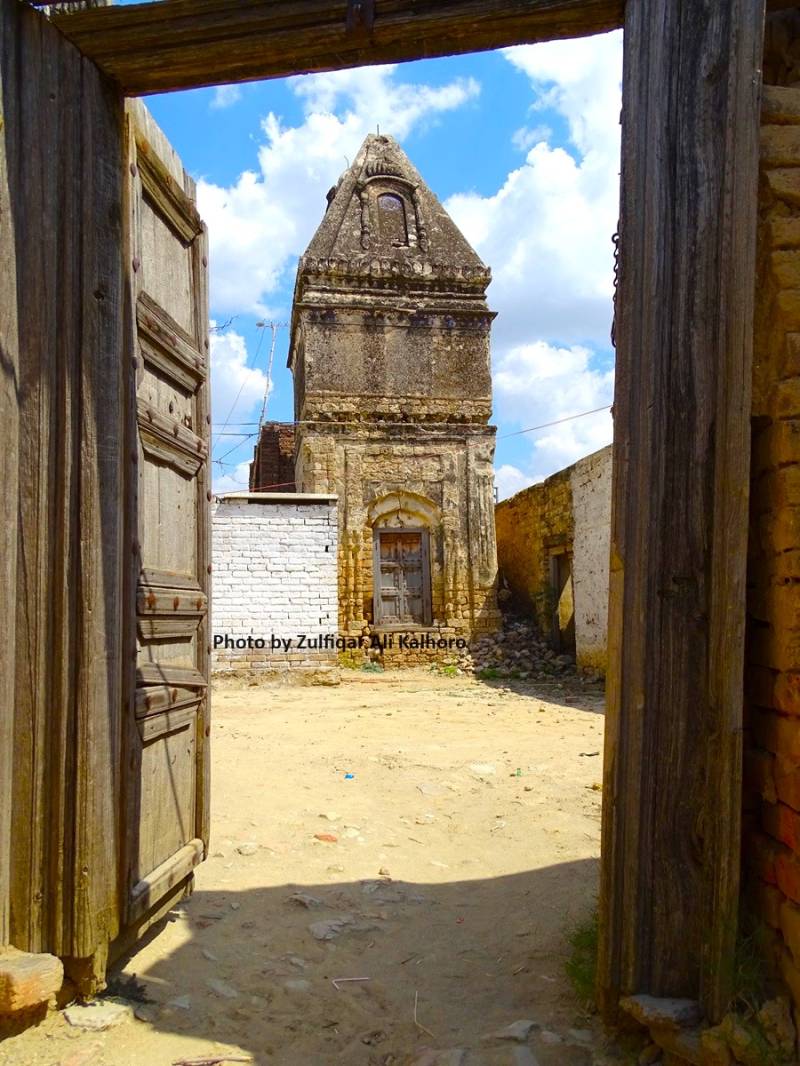
The mosque's facade features three decorative slabs depicting geometric designs. The pillars and spandrels are both decorative with floral designs. Attractive decorations on dividers between the two arches include a cypress tree design, which is not found in any other mosque in the Jhelum district.
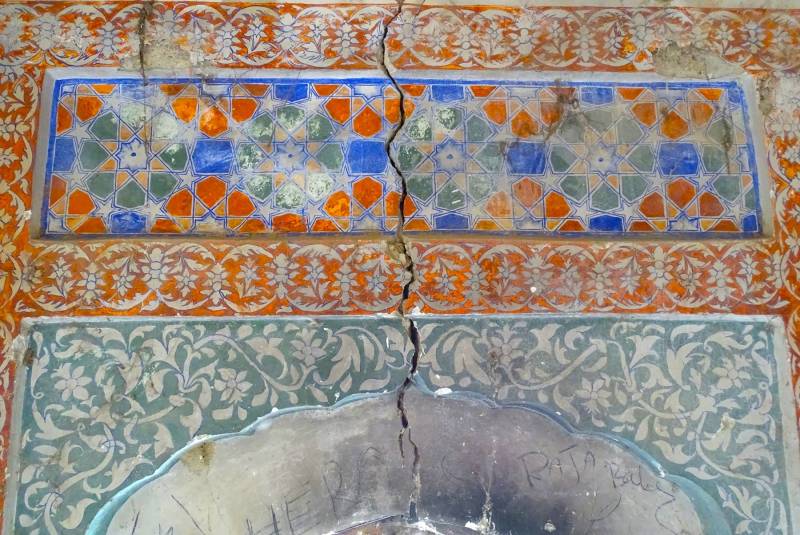
Apart from the mosque, there is another significant monument which is believed to have been built by Gakhar nobles. It is a stone-built structure that now lies in ruins. The surviving walls of the bungalow carry three marble slabs and two rosettes. The floral decoration can also be seen on the arches. The marble slabs show that this building was built in 1926, and the names of two dignitaries, Raj Wali Khan and Muhammad Abdullah Khan. In this ruined structure, they used to resolve disputes that occurred in the pre-partition Padhri.

